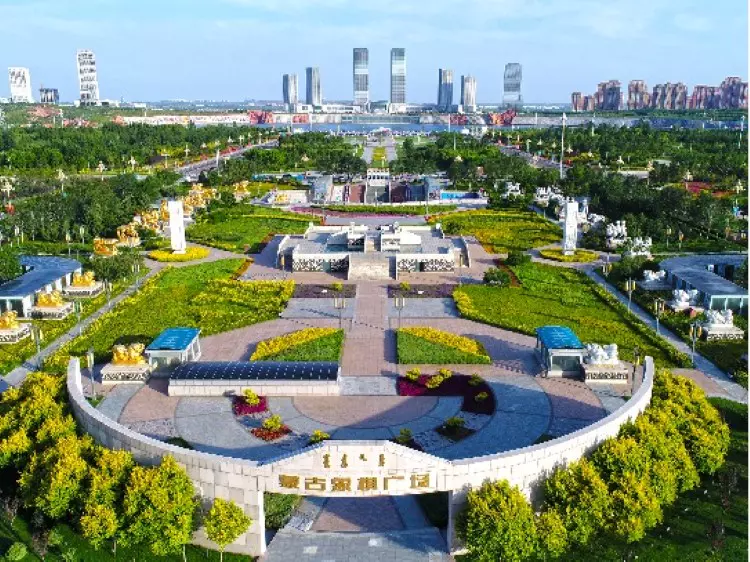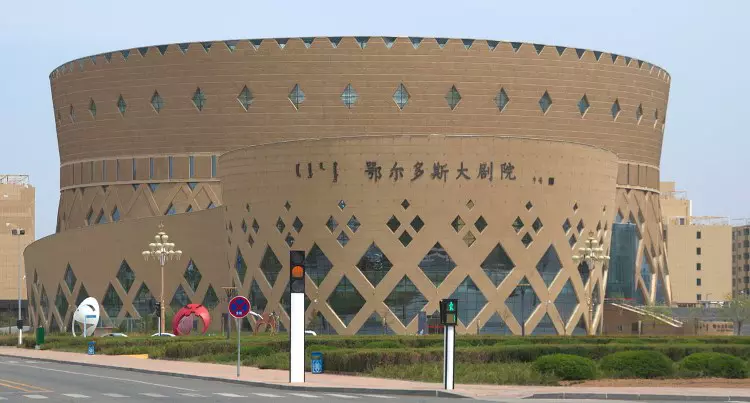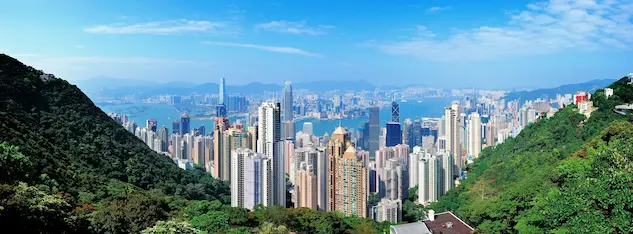Numerous new city projects are currently being implemented across various countries, with the goal of becoming smart cities, sustainable cities, or a combination of both. Building a completely new smart and sustainable city from scratch presents numerous challenges, ranging from the initial stages of master planning to final execution and long-term operations. In Balancing Dreams and Realities, we focused on the challenges that new city projects face.
Now, let’s examine the experience of building new urban areas in Ordos, located in Inner Mongolia, China. Although primarily rural, Ordos is administered as a prefecture-level city. It has become famous as one of the most notable examples of a “ghost city.” Once a grand vision for urban development, it now serves as a cautionary tale about the complexities of rapid urbanization, speculative real estate, and the unpredictable forces of the market.
The beginning of Ordos’ city-building dream.
This story of Ordos begins with ambition. In the early 2000s, the city’s leaders envisioned Ordos as a modern urban center capable of housing millions of residents and transforming the region’s economy. Fueled by the region’s booming coal industry and vast mineral resources, the local government sought to diversify its economy and create a state-of-the-art city. The development of Ordos was seen as a key strategy to boost both the regional economy and China’s broader goal of urban expansion.
The centerpiece of this development was the Ordos 2020 project, which aimed to create a futuristic city with a target population of 1 million people. Central to this project was the construction of the new Kangbashi district. In May 2004, the municipal government approved the detailed control plan for Kangbashi district. However, the plan was altered several times. The construction of the new district officially began and was carried out in three main stages: from 2004 to 2007, the infrastructure construction stage; from 2007 to 2011, the above-ground construction stage; and from 2011 to 2015, the project completion stage.
With wide boulevards, luxury housing, grand plazas, and high-end commercial districts, the new city promised a life of prosperity and modernity. Ordos was touted as a model for China’s urban future, with cutting-edge infrastructure and designs inspired by Western-style architecture. The city boasted modern amenities, including parks, schools, hospitals, and enormous residential complexes.

The central district of Ordos, particularly the Kangbashi area, became the most iconic symbol of this development. The city was built to impress, with landmarks such as museum, theature, and expansive cultural centers—all intended to project an image of prosperity and world-class development.

To attract non-coal industries, Kangbashi was designed to project an image of a modern, prosperous, and livable place. Many mega-projects, including more than 120 km of roads, parks, plazas, and modern and post-modern buildings, were built to high construction standards.
To accelerate population growth in Kangbashi, the local government relocated its offices and administrative organizations there. Officials who moved to the new town were given food and transport subsidies. In addition to public sector officials, workers from major coal enterprises, such as the Shenhua Group, were relocated to Kangbashi’s large residential areas. Furthermore, a number of public facilities, including the public library, museum, and several educational institutions (e.g., Beijing Normal University Affiliated Middle School and the Ordos Branch of Inner Mongolia University), were moved to the new town. However, as the years passed, a strange reality set in. Despite the city’s impressive infrastructure and modern facilities, Ordos struggled to attract residents. The ambitious plans for mass migration to the city never materialized, leaving many of the newly built properties unoccupied. Empty streets, abandoned luxury apartments, and eerie quietness became the defining features of Ordos, earning it the nickname China’s “ghost city.” Population growth was relatively slow; in 2009, Kangbashi’s population was only 30,000.
The challenges of creating the new city.
Several factors contributed to the city’s desolation.
One of the primary challenges faced by Ordos was the overambitious nature of its original planning. Ordos was conceived as a high-tech, futuristic city designed to attract residents. However, its development was not aligned with the actual needs or economic capacities of the region. The city was constructed with the hope of transforming the area into a major economic hub, but its economy remained heavily dependent on industries like coal mining and energy production, which are subject to market volatility.
The lack of a diversified economy has been a key factor in Ordos’ struggle to attract businesses and residents. While there were initial attempts to develop sectors like manufacturing, real estate, and tourism, the city’s reliance on a few industries made it vulnerable to fluctuations in commodity prices and global demand. The economic foundation of Ordos proved too fragile to support the enormous infrastructure and ambitious city plan.
China’s policy of rapid urbanization has often been criticized for creating cities that grow too quickly, without proper consideration of long-term viability. Ordos, like other “ghost cities” in China, was built with the hope that it would attract migrants from rural areas and become a bustling urban hub. However, Ordos was based on an overestimation of both population growth and migration patterns. The influx of people never occurred as expected, partly because the city was seen as too isolated and disconnected from major economic centers like Beijing and Shanghai.
Another primary challenge was that Ordos’s rapid development was driven by speculative real estate. Developers built vast numbers of apartments that far exceeded the local population’s needs. Many of these properties were purchased as speculative investments rather than as homes, leading to a glut of empty buildings. With the housing market cooling off after the initial boom, many of these properties were left unsold, further contributing to the city’s ghostly appearance.
A third Ordos’s challenges was the vast distances between the city and major job centers, which made it difficult to attract workers and professionals. Despite its mineral wealth, the city’s economy was heavily reliant on heavy industries, many of which did not generate enough demand for a city of Ordos’s scale. Consequently, people were reluctant to move to Ordos for work, as job opportunities remained limited.
A fourth cause was the lack of social and cultural integration. The city was developed without much consideration for the local traditions and culture of Inner Mongolia’s indigenous population. The influx of construction workers from different regions, coupled with the city’s remote location, created a situation where the social fabric of the city was weak. Many residents struggled to feel connected to the city and its vision. Finally, a credit crisis in the private lending network, along with a slump in the coal market and the slowing economy in 2010-2011, exacerbated Ordos’ problems.
A new life of the new city.
Despite its early struggles, Kangbashi district is no longer as deserted as it once was. Over the past few years, the city has undergone a slow transformation. While the grand vision of the Ordos 2020 project may not have materialized as planned, parts of the city have begun to find purpose and attract residents.
1. Economic Diversification. In recent years, Ordos has shifted its focus from traditional industries and speculative real estate to developing a more sustainable economy. The local government has worked to diversify its economy by promoting renewable energy, high-tech manufacturing, and tourism. The region’s coal and natural gas resources continue to play a significant role, but there is a concerted effort to reduce overreliance on resource extraction.
In 2022, the State Council approved the establishment of a national innovation demonstration zone for sustainable development in Ordos. According to the State Council’s circular, Ordos is expected to set an example for green and low-carbon development in desertification areas and to accumulate practical experience for implementing the 2030 Agenda for Sustainable Development. In 2024, the city plans to implement 426 major projects, with government investments over 50 million yuan and enterprise investments exceeding 100 million yuan—all of which have resumed operations.
Ordos is also home to the world’s first zero-carbon industrial park, a groundbreaking initiative designed to reduce environmental impact and promote sustainable industrial practices. This innovative park harnesses renewable energy sources, such as solar and wind power, to meet its energy needs, ensuring that it operates with a net-zero carbon footprint. With state-of-the-art green technologies, energy-efficient buildings, and waste-recycling systems, the park sets a global standard for eco-friendly industrial development.
2. Population Growth. Today, Ordos prefecture has a population of around 2 million people—far fewer than initially anticipated but still a significant number. Kangbashi, the city’s central district, has also seen growth. The district’s population has grown since the early years and reportedly reached nearly 120,000 people in 2021. The current metro area population of Ordos in 2024 is 794,000, compared to 485,000 in 2010. More families are settling in the city, drawn by affordable housing and the improving quality of life.
3. Tourism and Cultural Projects. Ordos has capitalized on its architecture and cultural projects, hoping to become a destination for domestic tourism. The city’s architecture—though stark and unconventional—has attracted interest, and landmarks like the Ordos Museum, the Ordos International Convention and Exhibition Center, and the Ordos Theature have become symbols of the city’s evolving identity. These projects aim to provide a unique cultural experience while promoting the city as a hub for business conferences and tourism.

One of Ordos’ new and exciting projects is the Smart Sport Park, an innovative sports complex designed by Plat Asia to integrate cutting-edge technology with physical activity. The park aims to revolutionize urban fitness by using smart infrastructure to enhance the experience for athletes and visitors. Featuring advanced sensors, interactive sports equipment, and real-time data analytics, the park offers personalized fitness tracking and performance insights. Its design promotes sustainability and accessibility, making it a model for modern urban spaces that prioritize health, technology, and green initiatives. The Smart Sport Park is a prime example of how technology can enhance community well-being and encourage active lifestyles.
4. Infrastructure Development: The city’s extensive infrastructure is increasingly being put to use. Ordos has well-developed transportation networks, including highways, high-speed rail connections, and an airport. These improvements have helped integrate Ordos more effectively into the region’s broader economy, making it more accessible for both residents and businesses.
In recent years, an Intelligent Connected Vehicle industry application demonstration zone has been built in Kangbashi district, contributing to the creation of smart city infrastructure. Autonomous vehicles, such as sightseeing buses, vending cars, and street sweepers, have already been put into operation on the city’s main streets. At the same time, autonomous taxis and security vehicles are now entering the integrated test and commissioning stage.
Despite these positive developments, Ordos still faces significant challenges. The city’s growth has been uneven, with some areas remaining sparsely populated. While the government is working to improve infrastructure and attract businesses, Ordos must continue to focus on creating a sustainable and diversified economy. Attracting more residents and businesses will be key to avoiding the pitfalls of speculative development in the future. The story of Ordos serves as a reminder of the risks inherent in large-scale urban planning. It highlights the importance of understanding real demand and the potential consequences of overbuilding in a market-driven economy. In the end, Ordos exemplifies the intersection of ambition, miscalculation, and resilience in the world of modern urban development. Though it may have started as a “ghost city,” Ordos is gradually finding a new rhythm—one that balances ambition with practicality.


